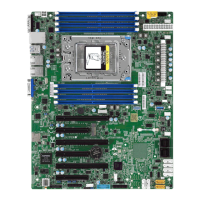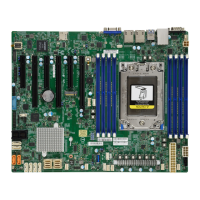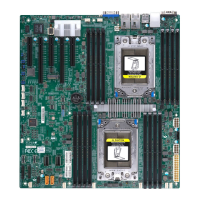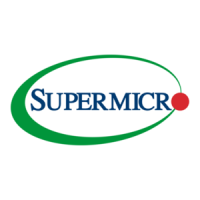H11SSL Motherboard Series User's Manual
128
Appendix C
UEFI BIOS Recovery
Warning: Do not upgrade the BIOS unless your system has a BIOS-related issue. Flashing
the wrong BIOS can cause irreparable damage to the system. In no event shall Supermicro
be liable for direct, indirect, special, incidental, or consequential damages arising from a BIOS
update. If you need to update the BIOS, do not shut down or reset the system while the BIOS
is updating. Doing so may cause a boot failure.
C.1 Overview
The Unied Extensible Firmware Interface (UEFI) provides a software-based interface
between the operating system and the platform rmware in the pre-boot environment.
The UEFI specication supports an architecture-independent mechanism for add-on card
initialization to allow the UEFI OS loader, which is stored in the add-on card, to boot the
system. The UEFI oers clean, hands-o control to a computer system at bootup.
C.2 Recovering the UEFI BIOS Image
A UEFI BIOS ash chip consists of a recovery BIOS block and a main BIOS block (a main
BIOS image). The boot block contains critical BIOS codes, including memory detection and
recovery codes for the user to ash a new BIOS image if the original main BIOS image
is corrupted. When the system power is on, the boot block codes execute rst. Once it is
completed, the main BIOS code will continue with system initialization and bootup.
C.3 Recovering the BIOS Block with a USB Device
This feature allows the user to recover a BIOS image using a USB-attached device without
the need for additional utilities. A USB ash device such as a USB ash drive or a USB CD/
DVD device can be used for this purpose. A USB hard disk drive cannot be used for BIOS
recovery at this time.
The le system supported by UEFI is FAT (including FAT12, FAT16, and FAT32) installed on
a bootable or non-bootable USB-attached device. Note that the BIOS might need several
minutes to locate the SUPER.ROM le if the media size becomes too large because it contains
too many folders and les.
To perform UEFI BIOS recovery using a USB-attached device, follow the instructions below.
1. Using a dierent system, copy the "Super.ROM" binary image le into the disc Root "\"
Directory of a USB device or a writeable CD/DVD.
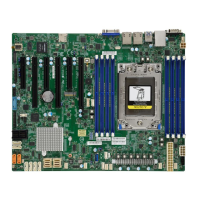
